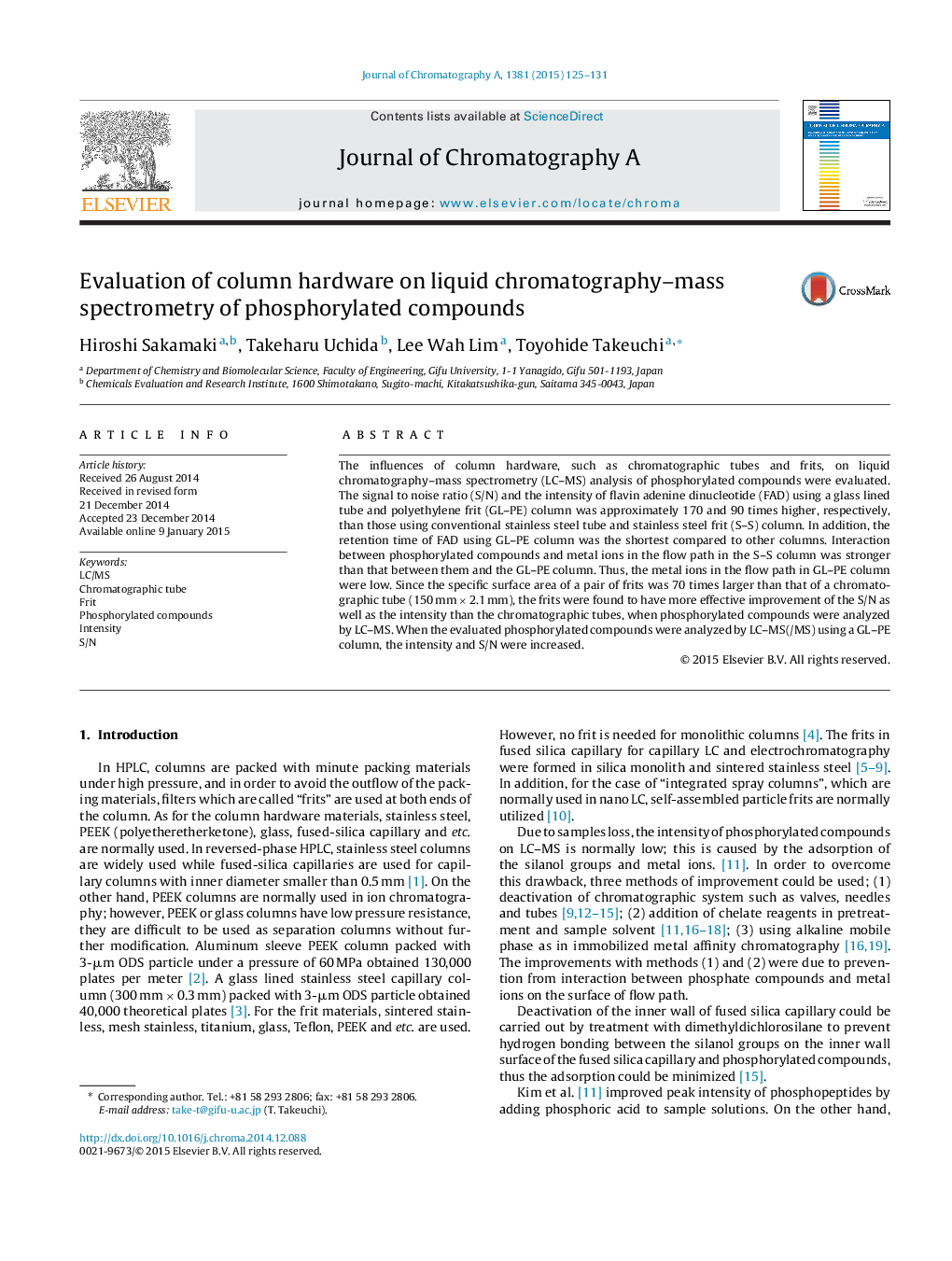| Article ID | Journal | Published Year | Pages | File Type |
|---|---|---|---|---|
| 7612042 | Journal of Chromatography A | 2015 | 7 Pages |
Abstract
The influences of column hardware, such as chromatographic tubes and frits, on liquid chromatography-mass spectrometry (LC-MS) analysis of phosphorylated compounds were evaluated. The signal to noise ratio (S/N) and the intensity of flavin adenine dinucleotide (FAD) using a glass lined tube and polyethylene frit (GL-PE) column was approximately 170 and 90 times higher, respectively, than those using conventional stainless steel tube and stainless steel frit (S-S) column. In addition, the retention time of FAD using GL-PE column was the shortest compared to other columns. Interaction between phosphorylated compounds and metal ions in the flow path in the S-S column was stronger than that between them and the GL-PE column. Thus, the metal ions in the flow path in GL-PE column were low. Since the specific surface area of a pair of frits was 70 times larger than that of a chromatographic tube (150 mm Ã 2.1 mm), the frits were found to have more effective improvement of the S/N as well as the intensity than the chromatographic tubes, when phosphorylated compounds were analyzed by LC-MS. When the evaluated phosphorylated compounds were analyzed by LC-MS(/MS) using a GL-PE column, the intensity and S/N were increased.
Related Topics
Physical Sciences and Engineering
Chemistry
Analytical Chemistry
Authors
Hiroshi Sakamaki, Takeharu Uchida, Lee Wah Lim, Toyohide Takeuchi,
